Our people know the plants and animals that we share our country with. Each brings with them a unique gift that we use to help us in how we live on a daily basis within our community.
We are always respectful of what Baiami provides for us, making sure we never take more than what we need and always leaving enough for future generations to come.
Here are some of our unique innovations and creations using only what our country provides.
Bigangga (Possum Skin Cloak)
Possum skin cloaks had to be earned. You did this by through the process of initiation. Initiation is an important part of growing up in our community; it’s like going to school, where you learned the skills to survive and thrive.
Through initiation as a young adult, you would need to hunt the possums that were required to make your own cloak. The insides of the cloak would have designs imprinted on them; these designs told the story of your mother and father; they also made reference to important and significant areas around our country like for example the Moira Lake or the Cadell Fault.
Our cloaks were used as a source of warmth, but when we turned them inside out (that is, the fur was turned down), they acted as a water-proofer and kept us dry and warm during periods of rain.
When one of our community passed on into the Dreaming, they would sometimes be buried with their cloak. At other times, they would be handed down.
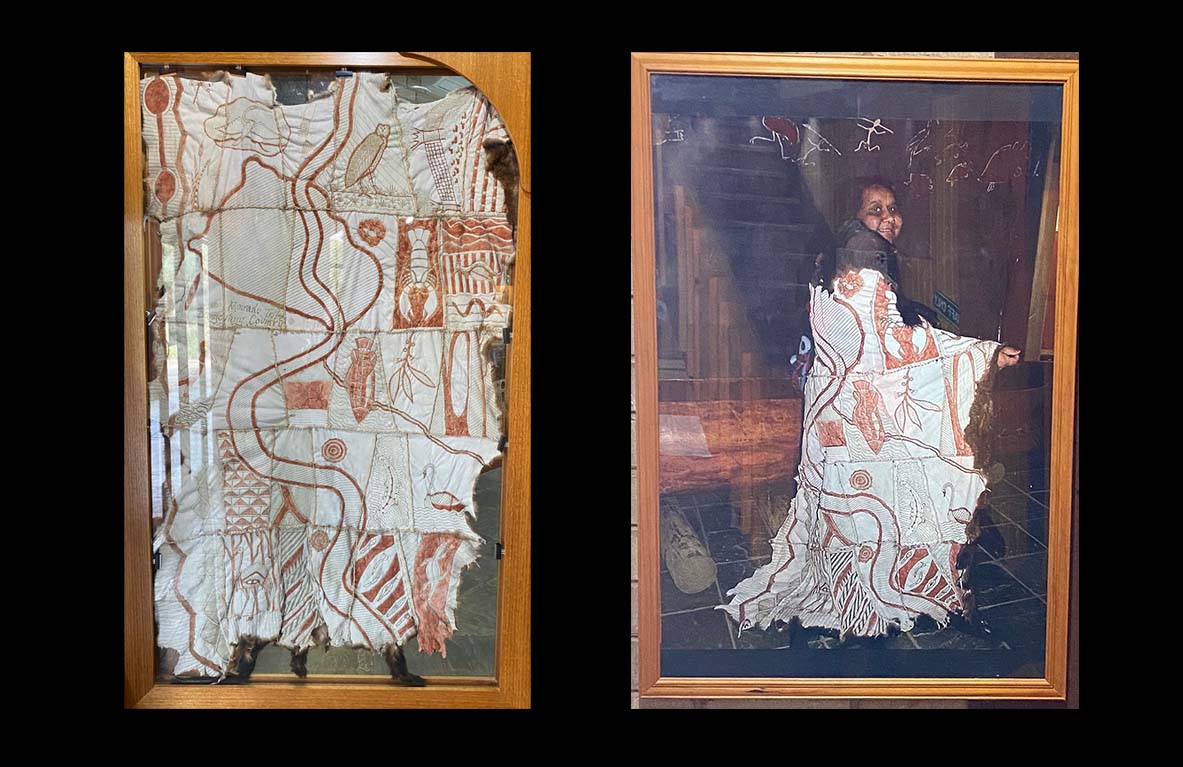
The Bangerang Possum Skin Cloak. Aunty Irene Thomas wearing the cloak. (Images provided by The Bangerang Cultural Centre)
For an interpretation of what each of the panel designs mean, click here.
Weaving
Weaving is an important practice for our people, usually by the women of our community. With our understanding of country, we know the plants and grasses that are best suited for this purpose (like the Spiny headed Mat-rush); so we go out into country, we collect these natural fibres and we come together as a community to spend several hours weaving and yarning, passing this skill and knowledge to our young ones and sharing stories of our history and country. We usually call these ‘Weaving Circles’. Some of the items we would create together include; baskets, dilly bags, scoops, nets (for catching fish, birds and moths), ropes/strings, tools, animal skins (clothing/shelter/bags). We take great pride in the items we create and sometimes we decorate our weavings with colour from natural dyes found in ochre, berries, roots and nuts.
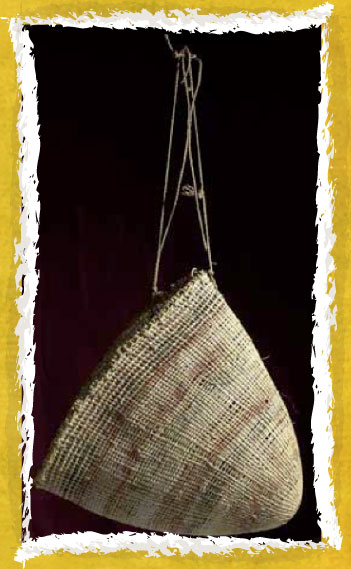
Bangerang basket. Image source: Bangerang Cultural Centre.
Matha (Canoe)
Canoes are used for fishing as well as transport. From Biyala (River Red Gums) that grow along the banks of our rivers and creeks, we would first search out those trees which had the natural shape of a canoe already within its trunk. These were the trees that we would then cut down and hollow out to use as canoes.
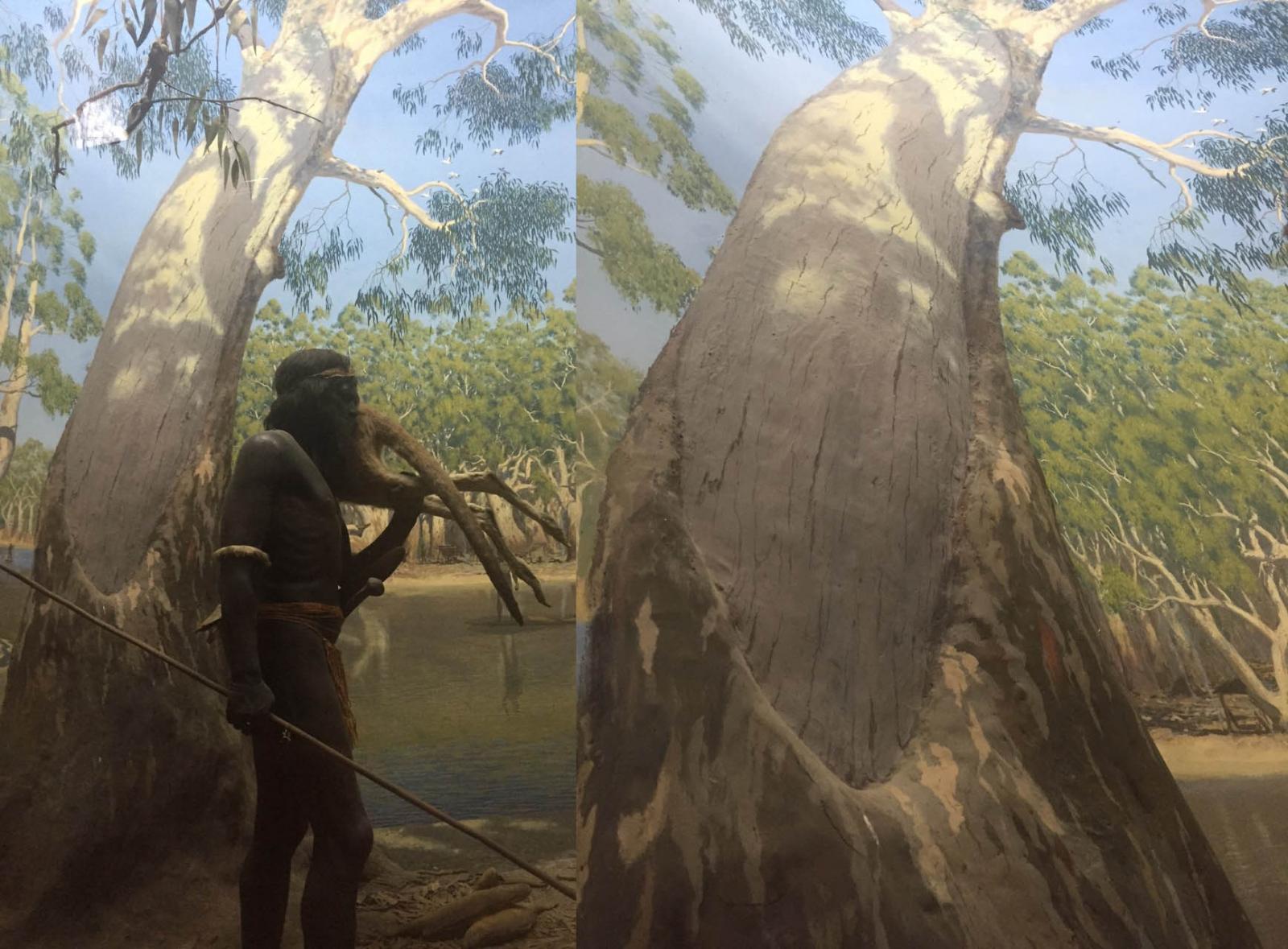
Scar Tree. Image source: Bangerang Cultural Centre.
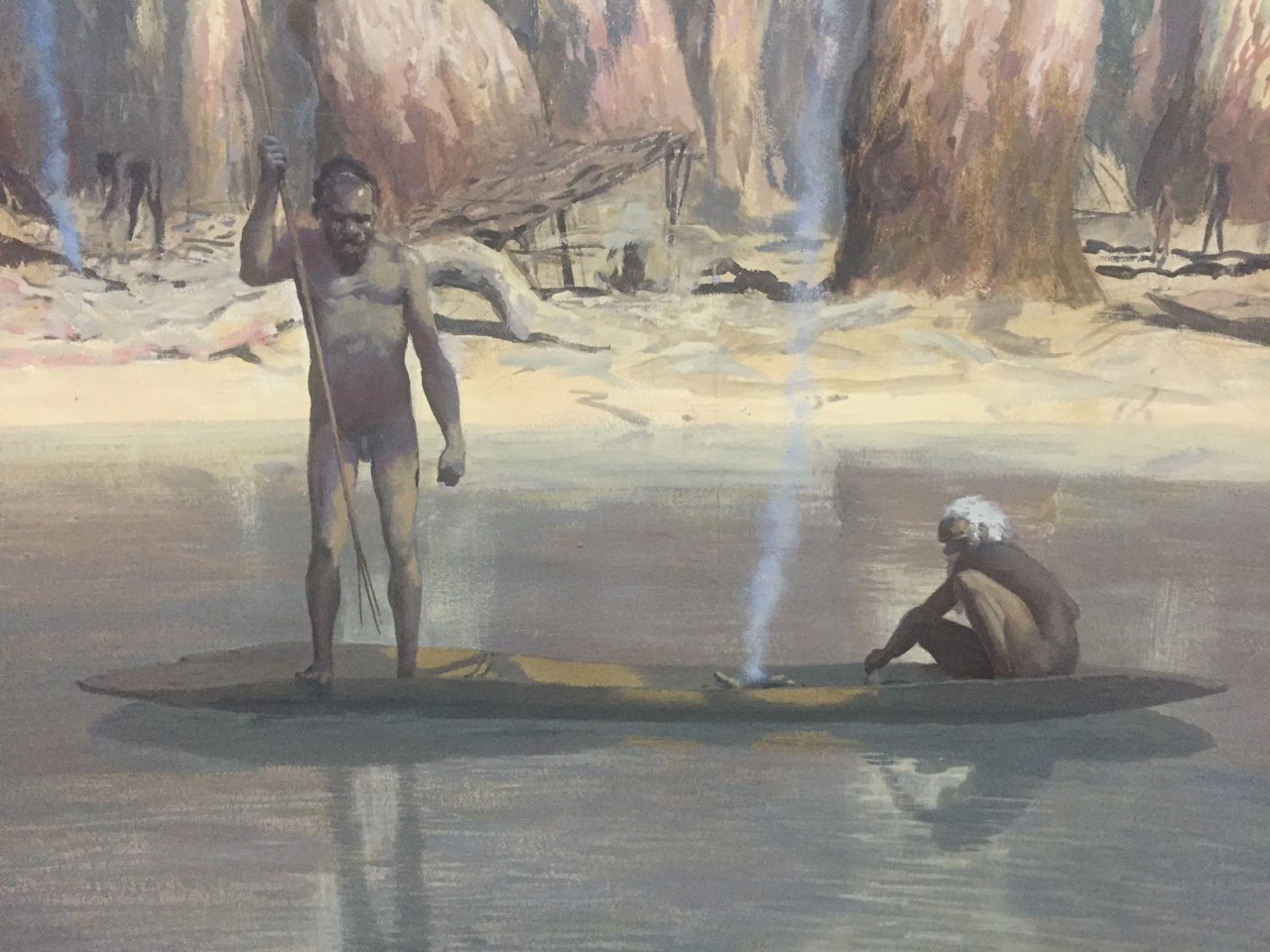
Bangerang canoe. Image source: Bangerang Cultural Centre.

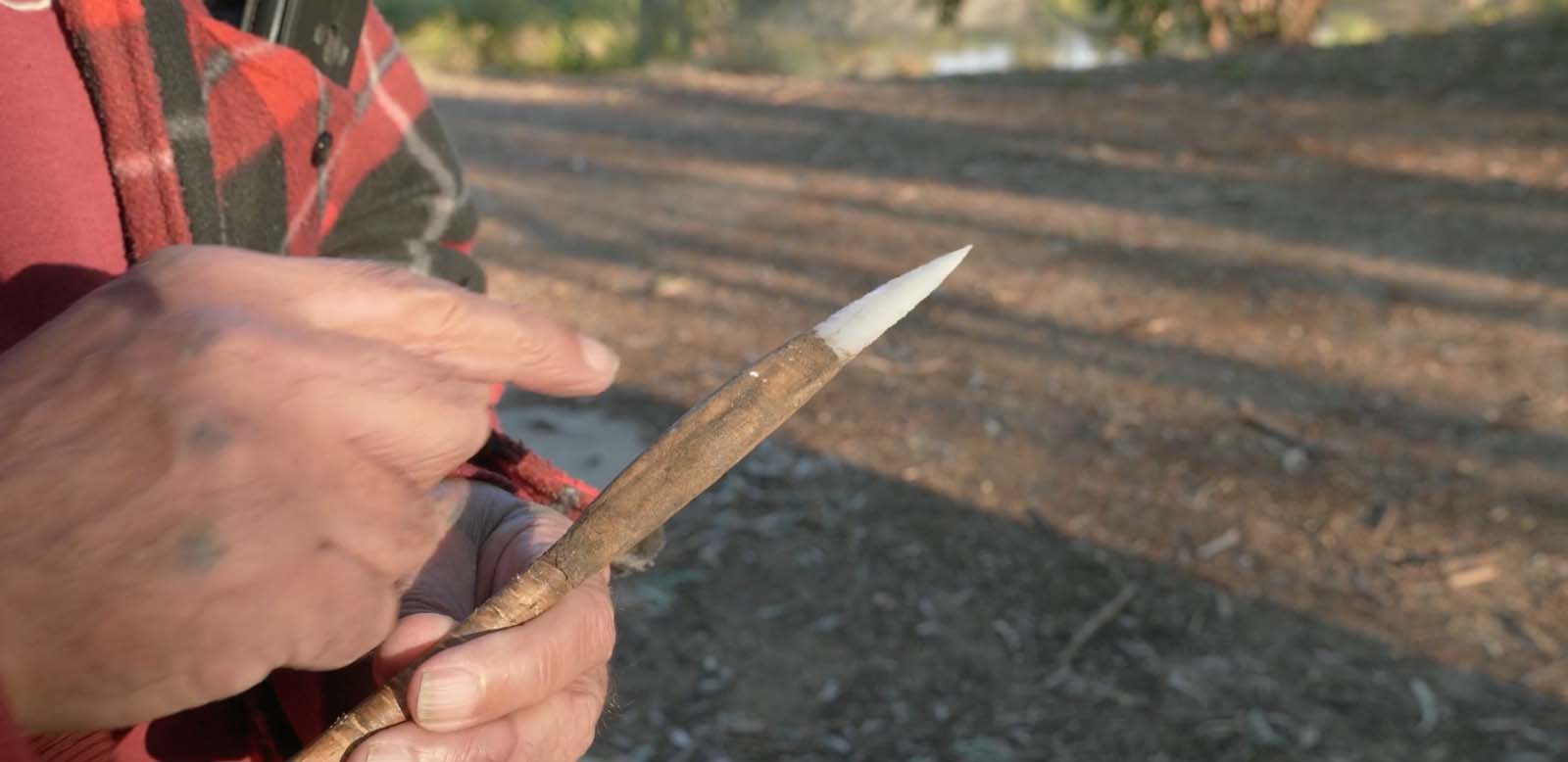
The sharp serrated quartz tip would be held in place with a natural gum.
Gama (Reed Spears)
The reeds along the Moira lake were used to make high quality fishing spears for our people. We would also use the spears to trade and barter with other tribes for items that weren’t available on our country, like certain stones and rocks. Green stone was one such item that we would trade our spears for; we would use the green stone to make our axe heads.
Our spears were highly sought after because of their quality. They were made by first taking a length of reed. At one end of the reed, Kangaroo sinew was used to hold it in place; at the other end, a wooden shaft would be inserted into the reed. Kangaroo sinew would be used again to fix the wooden shaft into the reed and a gum would be rubbed over that to hold it firmly in place. At the end of the wooden shaft, a sharp, serrated quartz tip would be fastened with more natural gum.
Emu fat would then be used to coat the entire spear to protect it from rotting because of water.
Content created by the Bangerang Community in collaboration with the SharingStories Foundation as part of the Dunggula Project.
Grinding Stones
Grinding Stones have many uses around our community. Seeds are ground to make pastes or flours and ochre is ground and mixed with water to create a paint. Certain foods in their natural state were poisonous, but after we crushed and washed them, it would make them safe to eat.
Fern roots, bulbs, seeds, tubers, berries, insects, small mammals and reptiles were among the different food sources that would be crushed and pulped before they were ready to eat.
Normally grinding stones were too large and heavy to carry with us when we moved around on country. What we did was when we left camp, we would turn them upside down so it could be preserved for the next time we came around.
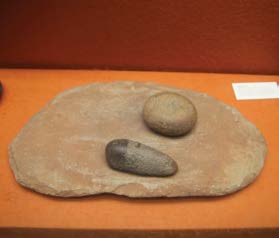
Bangerang Grinding Stone. Image source: Bangerang Cultural Centre.

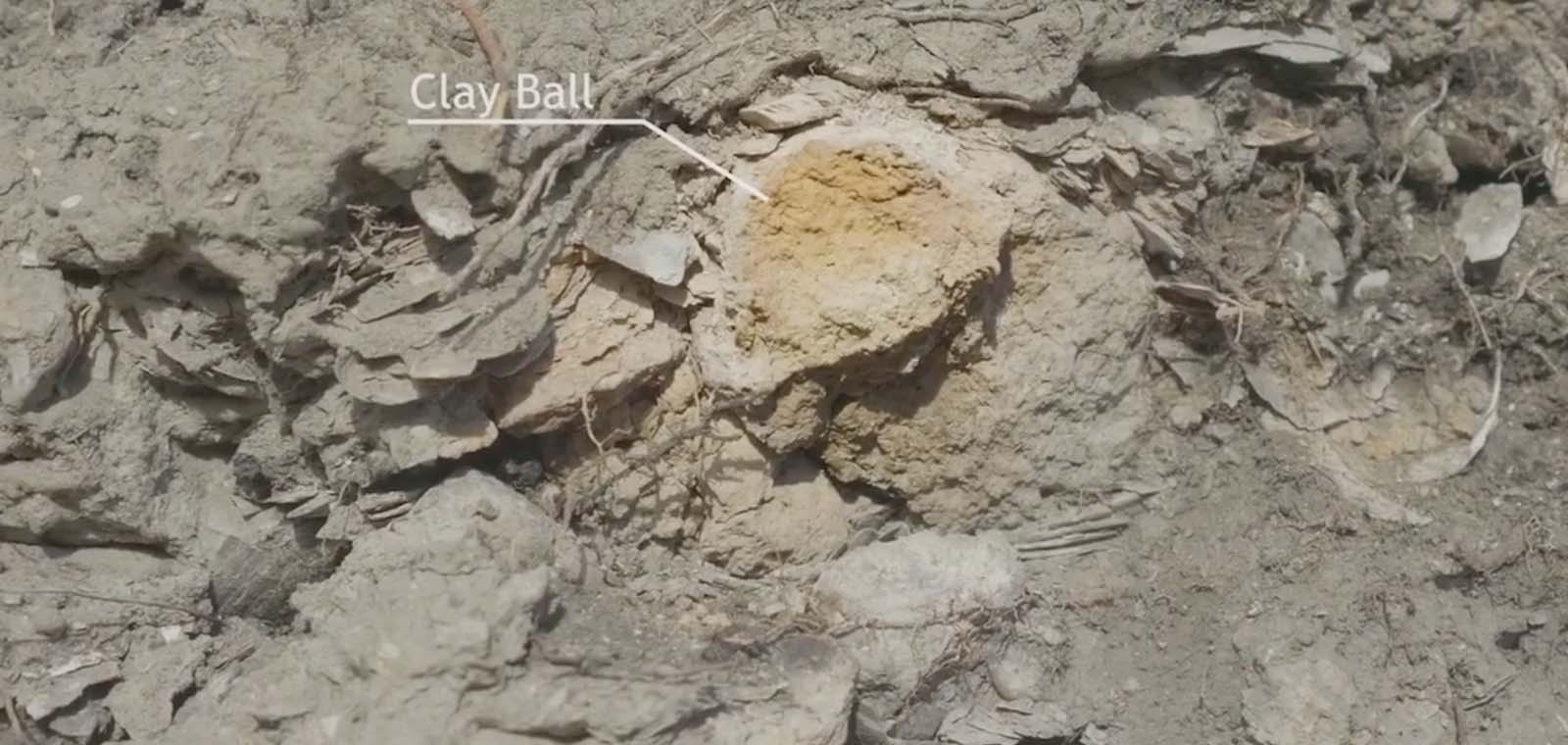
Small fist-sized balls of clay would be used as ‘heat-containers’ to help cook animals like fish and kangaroo.
Clay Ovens
Uncle Kevin Atkinson Jr. shares a story about our people’s use of clay ovens to steam cook animals like fish & kangaroo.
Content created by the Bangerang Community in collaboration with the SharingStories Foundation as part of the Dunggula Project.
Ochre
The Ochre site (where we find Ochre), is an important spiritual place for our people. This is because ochre is used to create the colours and paints that we would use for our ceremonies, songs and dances.
Ceremony is our version of school; it was where our young ones would go to learn how to hunt, how to survive and where they would learn about our cultural lore. These are the lessons that would help you to grow and mature into a responsible adult.
The beautiful colours that appear in the rocks are found in our Dreaming stories. When Tunnapan the Serpent passed through and created all the country and waterways, he also splashed his colours around, giving us all the colour that we see today.
Content created by the Bangerang Community in collaboration with the SharingStories Foundation as part of the Dunggula Project.

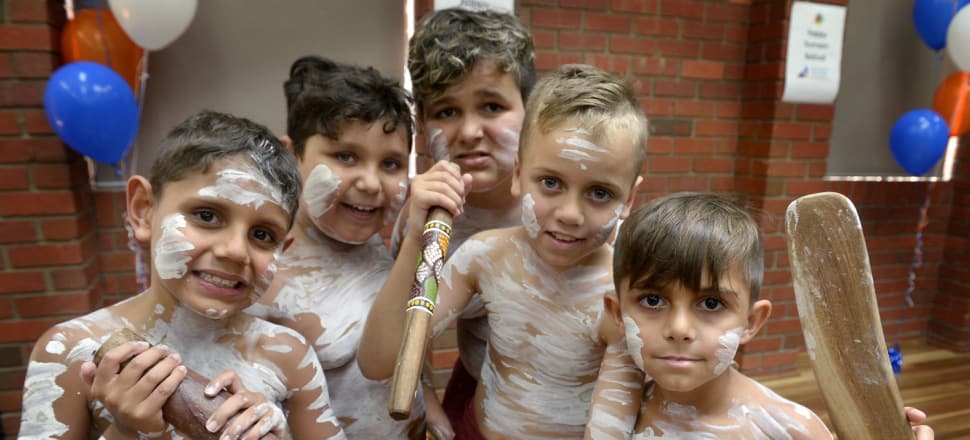
The Damanmu Bangerang Dance Group, painted up in ochre. Image source: Shepparton News.
Nets
Using the plants which grew on our country, we make nets to catch animals like fish, duck, kangaroo, yabbies and emus. We also used nets to make headbands.
We understand the behaviours of the animals on our country, so with this knowledge we know how to set traps to capture them.
For example we catch ducks by setting a carefully laid trap. A net is tied between two trees above a body of water near to where a flock of ducks may be waiting. We would then throw a boomerang above the ducks at a certain height to confuse the ducks into thinking that the boomerang is a predatory hawk. The ducks would flee, flying away, keeping low, heading straight into the waiting net.
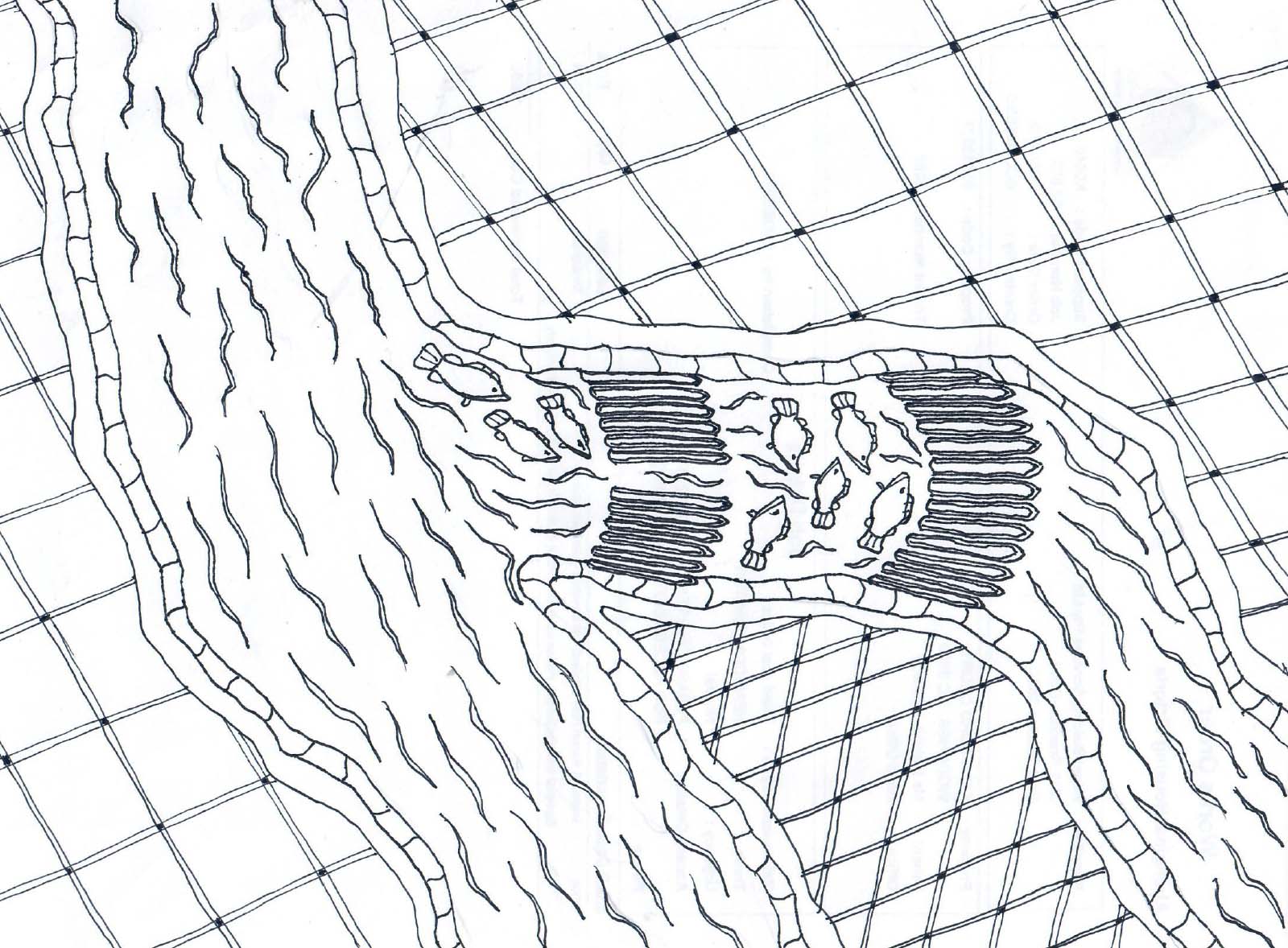
Bangerang Fishtrap. Artwork by Uncle Kevin Atkinson Jr.
The nets were made from a water plant called ‘Cumbungi’ (bullrush) which was plentiful around the waterways.
The roots of the Cumbungi were soaked in water, scraped with a mussel shell, dried out, then made into a thin string where it was spun into strands and twisted into cord by rolling it by hand on a person’s thigh.
The leaves of the Cumbungi were used to make baskets and mats.
The Cumbungi root is also part of the diet; they are cooked or eaten raw. The cotton seeded head of the Cumbungi when dry, is used to make fire and when burnt, it prevents insects from biting you.
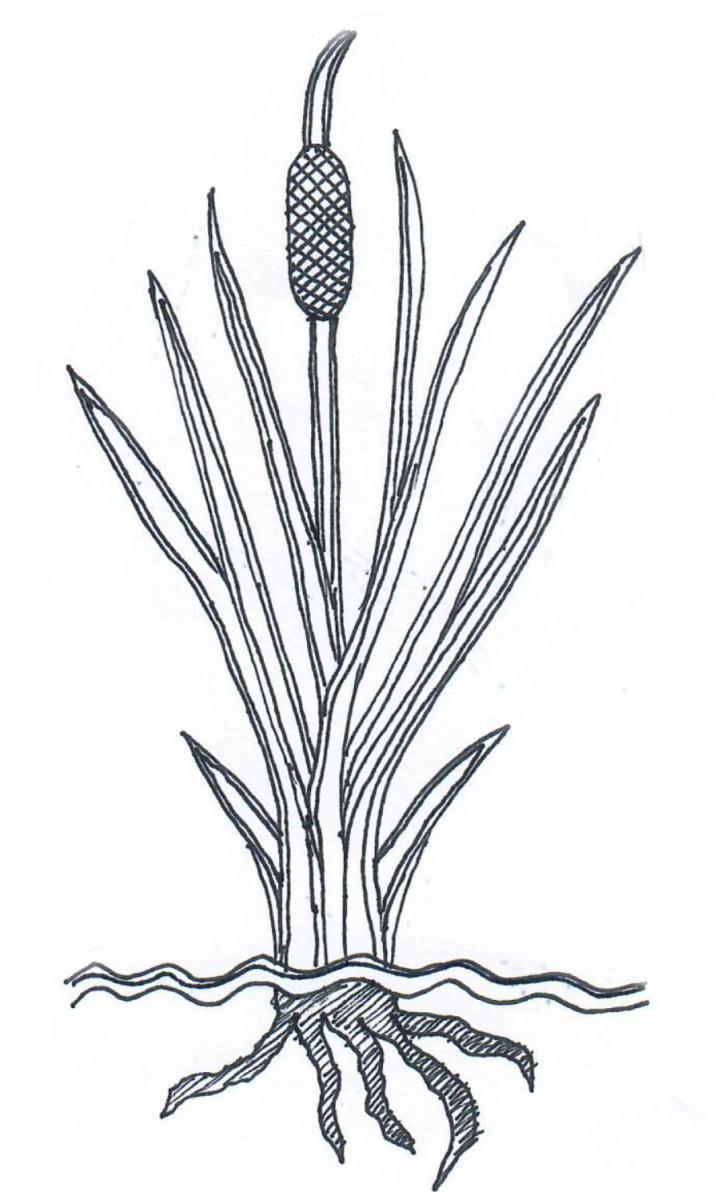
Cumbungi Plant. Artwork by Uncle Kevin Atkinson Jr.
Wanya (Boomerang)
We made our boomerangs using the strong wood from the River Red Gums that grew on our country. We would look for trees that had a natural ‘elbow’ shape and made sure that the wood’s grain ran the full length of the boomerang; this would ensure that the boomerangs were strong and hardy.
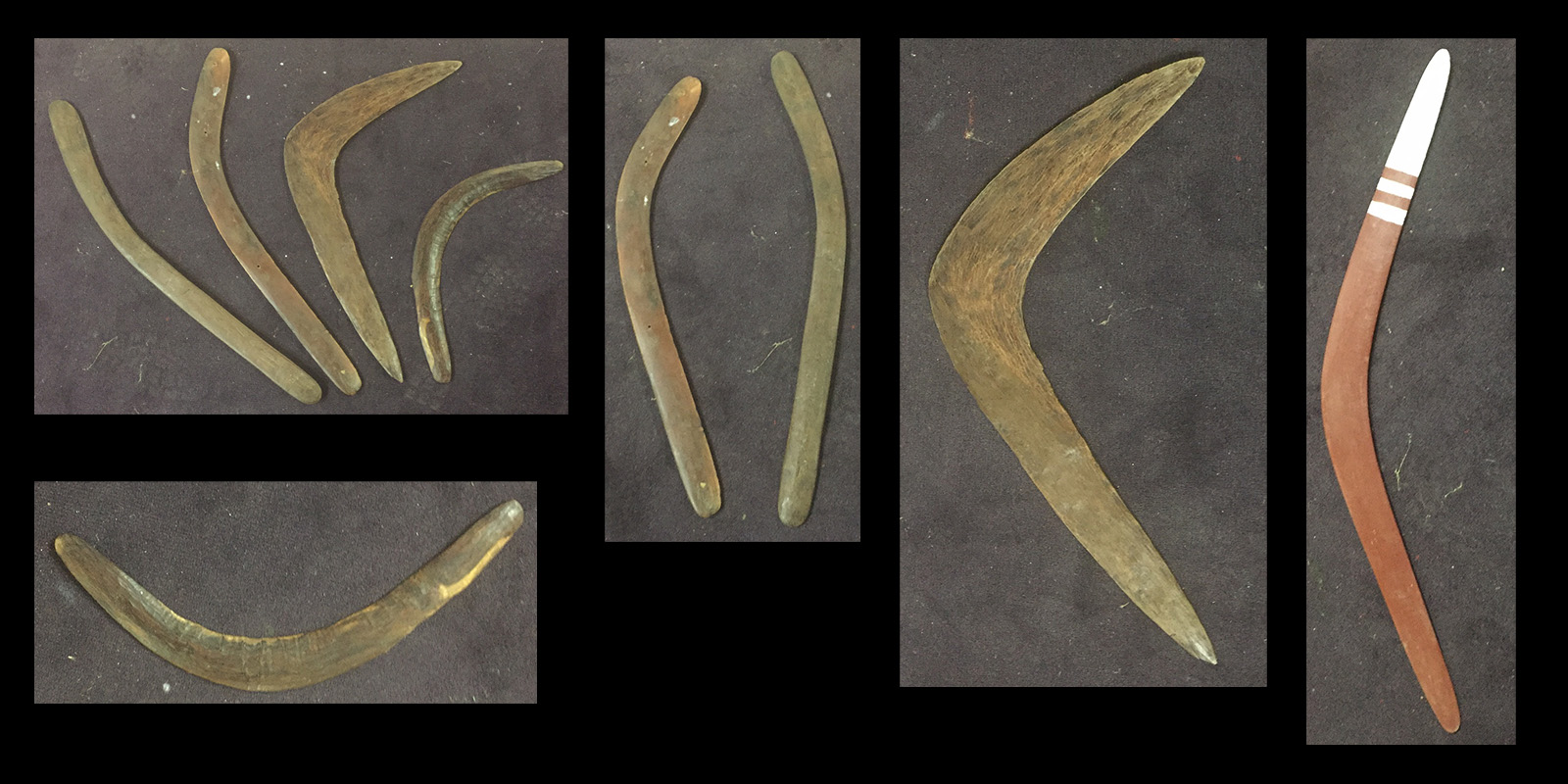
Bangerang Boomerangs. Images provided by Uncle Kevin Atkinson Jr.
Boomerang Cross. Uncle John ‘Sandy’ Atkinson. Source Museums Victoria.
Sources & Further Reading
-
Bangerang Possum Skin Cloak
Produced by the Bangerang Cultural Centre, this document provides an interpretation guide for the designs on each of the individual panels that make up the cloakDownload

